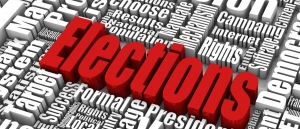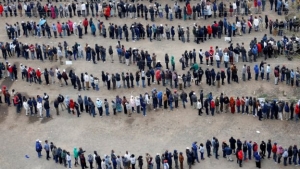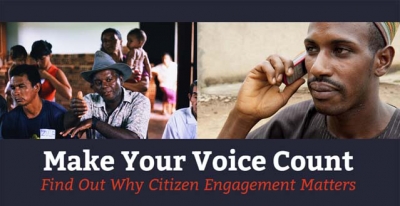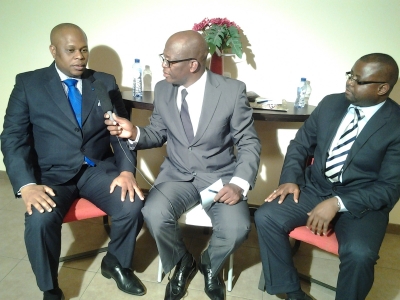Reports and Articles
Our projects explore different ways that people at the local level can influence conversations and policy making at the highest levels in Africa.
Top Effective Election Observation Methodologies Used Around The World
Editor’s Note: This article is an extension of a previous one titled how to organize an election observation mission. The purpose is to provide further guidance on election observation missions by discussing some of the election observation methodologies used around the world to help new observation groups or existing ones know the sort of options available to them and the key players in each of the respective methodology for ease of technical assistance.
Election observation by its very nature is an effort towards ensuring the credibility of an election. This is done by deploying and watching the processes in order to deter possible fraud as well as ensure compliance with the regulations for conduct of election. The mere presence of accredited observers is capable of achieving transparency of the process. Different groups adopt different election observation methodologies in deploying observers based on their objective for such election.
There are several election observation methodologies and approaches that different election observation missions adapt and adopt in every given context. Advances in technology in the 21st century have further refined election observation methodologies. And given the very important place of democratic governance birthed through democratic election in human societies, innovative citizen election observation has definitely come to stay. Whilst every election poses its unique challenge, demanding a matching unique observation approach, knowing the various approaches being deployed around the world helps in the choice of methodology to adapt when and where.
Find below some of the election observation methodologies that are currently deployed around the world;
#1. Parallel Vote Tabulation (PVT) also Known as Quick Count:
This is gold standard election observation methodology that has been around for thirty years. Adopted and adapted around the world with various branding such as Quick Count, swift count or rapid count, it all falls within the purview of systematic election observation. PVT or Quick Count is an election observation methodology that heavily uses information communication technology – ICT and science of statistics in deployment of observers.
The observers are deployed to pre-assigned polling stations after a random representative sample of the polling stations is drawn by a trained statistician. The observers are equipped with a checklist that cover all aspects of the Election Day process including official results at polling station levels. The checklist is what guide their observation and using their mobile telephones, the observers either call-in or text their observation reports routinely throughout the course of the election Day. The sent reports are bridged into sophisticated database that rapidly processes huge amount of data in real time.
This election observation methodology is mostly suitable in democracies that have history of flawed election often resulting into violence and are trailed by loads of litigations. And because this methodology is driven by data, it offers a perfect credible option to violence and can serve as good evidence in a litigation. With the use of ICTs, Quick Counts has the unique advantage of providing overall update on the entire election in real time on an election day. This has the ability to shape the right perceptions in the citizenry about the election.
Going down the history lane, PVT was first deployed by citizen groups in the Philippines in 1986, it has gained popularity and has been adopted in many countries around the world. It is about the most sophisticated, complex and technical election observation methodology as it upholds precision above and beyond. That is why expertise of Quick Count has remained limited with a select number of organizations like National Democratic Institute (NDI) in the USA, Transition Monitoring Group (TMG) in Nigeria, Centre for Democratic Development (CDD) in Ghana, Election Observation Group (ELOG) in Kenya amongst others.
Quick Count is hinged on use of Statistics, ICTs and thorough training and retraining for the many observer volunteers. Though expensive to deploy, it is about the only election observation methodology that provides independent verification of the official results announced by the Election Management Body-EMB. It also parallels the EMB in documentation of elections which can serve various purposes ranging from academic research to civic interventions based on empirical evidence. This election observation methodology is strictly an Election Day methodology and uses the stationary observer model with few roving supervisory observers. Quick Counts can also be adapted to observing referendums and other similar undertakings. See the PVT observation findings report for Nigeria 2011 general election.
#2. Hotspot Deployment or flash points observation
This is the election observation methodology that focuses on deploying observers to areas that are volatile in the leadup to the election or have a history of election violence. The objective is always to deter further outbreak of violence with presence of observers who are also on the lookout for the causes of the violence. The clue is that once under watch, human beings are likely to tame their excesses. Though the hotspot observers are deployed to observe the entire election process, their primary focus is to watch for violent outbreak indicators and report same immediately to enable authorities contain the situation.
This methodology has an inherent risk in that it places observers in potential violent zones. The plan is to not bring them to harm’s way but to leverage their presence in creating early warning systems that ensure such violence does not breakout and where unavoidable, have less casualties. Such observers are trained on safety drills and precautionary measure in addition to violent indicators monitoring and election processes.
Given the very dicey nature of this observation, it employs information communication technology for rapid and real time communication. Basically, the decision on where to deploy observers under this methodology is based on electoral history of the country, state or county as it relates to electoral security from previous elections. This methodology works both for election day as well as pre-election long term observation. For election day, it employs stationary observer model while in the pre-election period it is a roving observer model. Any group deploying with this methodology has to build very structured engagement with the security agencies. Here’s a very useful guide on monitoring and mitigation of electoral violence by National Democratic Institute for organizations looking to organize hotspot observation deployment.
#3. Traditional or general observation:
This is about the most known and probably the most used of all election observation methodologies. The core of this methodology is in deploying vast number of observers to create massive presence in as many polling stations as possible. Traditionally, it used to be just about the visibility of the observers around polling stations to deter saboteurs from rigging or manipulating the elections. This has changed for some observer groups as the methodology is now also leveraging ICTs; especially Social media to increase its impact around election reporting as well.
This methodology does not apply systematic deployment in managing observers neither does it build sophisticated reporting protocols on election day. Due to the large number of observers some missions deploy, it becomes also less likely to train and retrain the observers. Most missions hold observer briefings which basically tend to explain how the checklist can be completed on election day. Under this approach, observers are deployed to polling stations that are most convenient to them.
The deploying group only gets them accredited, holds observer briefing, equips them with a checklist and probably gives them a stipend at the end of the observation after they return the completed checklist. Though such data is anecdotal and may not offer an overall picture, it certainly has its impact in terms of shaping perceptions and giving citizens the opportunity to participate. CDD is a key player in this respect.
#4. Exit poll
This observation methodology is closely linked to opinion poll except that its conducted at polling stations and with participants being those who have cast a ballot. Mostly used in elections that are seemingly a close call, exit poll is the rarest observation methodology citizens deploy. The core of the methodology is to establish voter motivation for voting the way they do. Observers under this methodology station at one polling unit and depending on the sampling ratio; asks the picked voters after they cast their ballot who they voted and why they voted for the party or candidate.
This is also a very technical methodology that requires a lot of expertise in managing. Though it does not document votes share at the polling station level, the majority opinion in favour of a candidate or party usually bear a likelihood of such candidate emerging winner in that election. Exit polls do not concern itself with routine updates in the cause of the election day but do ensures adequate documentation of all respondents and responses either on paper or with dedicated electronic interphase. At the earliest possible time after close of polls, an exit poll can share its findings.
Being a technical methodology, training and sophisticated data analysis applications are essential. And exit poll is strictly an election day methodology as it only seeks to know the voters motive after balloting. See an account of 2015 UK Exit Poll Election.
#5. Targeted observation
As an emerging election observation methodology, it extensively borrows from Hotspot election observation methodology, but with focus on special populations or groups. With the increasing agitation for inclusive democracies, many populations that hitherto were not sufficiently catered for. Currently, four groups are covered in targeted observations:
- Women participation: With the increasing push for more women inclusion in leadership as well as gender mainstreaming in all spheres of human endeavour, women participation in election has become a key target. Observers group with special focus on women participation deploy observers with checklists that principally tracks how many women were polling officials, party agents, voters and candidates. The objective is to ascertain the level of women participation and to follow up with more advocacy. Organizations like the Women Trust Fund are leading the charge in encouraging more women participation.
- Youth participation: Another population that is increasingly getting all the attention in terms of participation in election is the youth constituency. Election observation deployment around this population as groups like YIAGA are undertaking with the youth observatory initiative is quite handy here. Observation for this group seeks to establish how many poll officials are youth, how many observers are youth and how many party agents and candidates are of the youth constituency. Again, the goal is to establish evidence for more advocacy.
- Security observation: This is yet another constituency that is getting specialized election observation attention especially around Africa given the unique security challenges at elections. Under this targeted observation, observers are deployed to specifically lookout for the conduct of the security personnel deployed as well as their performance. The idea was born of the fact that some overzealous security officers were beginning to abuse their duties, act partisan or under perform their duties. Groups like Cleen Foundation are doing so much around this kind of election observation.
- Persons with disability-PWDs: As a population that is short changed in more than one way, targeted election observation is beginning to focus on PWDs in order to principally lookout how polling units and voting processes are made accessible for this constituency. Advocacy is to see more PWDs run for office as well as function in all aspects of the electoral process. Observation here monitors all these and base further advocacies on gaps observed. Joint National Association of Persons with Disability is one of such group in Nigeria that is doing so much in this regard.
All election observation methodologies aim to ensure credibility of the electoral process. Though they vary in size and methods, the deployed accredited observers function on behalf of the citizens as such must be seen and perceived to be non-partisan for their reports to be accepted. Before you decide on which of the election observation methodologies your observation mission will adapt, it is very important to first define and establish what it is you want to achieve with the deployment.
The objective of the observation is very instrumental in the determination of which of the election observation methodologies is appropriate. Find OSCE Election Observation Handbook for more guides on election observation. Finally, knowledge of the legal framework and other national laws guiding the conduct of election in any given country is very important. Though general election observers code of conduct exists, every country still has her legal framework which also influence election observation missions. This can be in the area of observers’ accreditation, kits, checklist or movement on election day.
Africa’s 2019 elections: Democracy is a work in progress
Democracy in Africa was long regarded as an oxymoron. In 1990, there were just eight formal democracies out of the (then) 53 nations on the continent. Six years later, in 1996, 18 countries were classified as formal democracies. Democracy is now on the march throughout the continent with 23 countries holding elections at various levels in 2019 – and that presents unique challenges to a range of state and non-state agencies.
It’s a busy year for democracy in Africa, with 23 presidential, parliamentary and council elections in 2019. This reflects that elections have become an integral part of the continent’s democratisation process since the “Third Wave of Democratisation” in the late 1980s and early 1990s.
There have already been three elections – in Nigeria (general), Senegal (presidential) and Guinea-Bissau (legislative). The challenge to ensure elections are characterised by inclusiveness, transparency, accountability, and competitiveness will be further shaped by the remaining twenty elections, including South Africa, Malawi, Senegal, Mali, Ghana and Tunisia.
Moreover, the organisation and administration of these multi-party democratic elections will be closely watched by political parties, the media, and international election observers. The continent’s political landscape has changed dramatically since the 1990s, with many, if not all, countries on the continent now in support of multi-party and competitive elections.
However, it is clear from Africa’s first general election of the year – Nigeria – that elections still take place under very difficult conditions. The delayed election held on 23 February 2019 revealed that election management continues to be a very complex administrative operation which has to be implemented within a very volatile political and security atmosphere.
Contributing to this state of affairs are the actions of rogue domestic and foreign actors with self-seeking motivations, trying to discredit the process. This has led to a lack of credibility and public confidence in both the electoral process and the outcomes. The contested political and security character of elections in Africa varies widely depending on the phase of the country’s political development. For example, South Africa since 1994 is touted as one of the few African countries that hold legitimate, free and fair municipal, provincial and national elections.
Post-election, it is rare for the losing political parties to challenge the conduct of the election or its outcomes. The Independent Electoral Commission of South Africa (IEC) has high levels of integrity to ensure fair and equitable access to all contesting parties and candidates, whereas in other African countries, election rigging, violence and annulment remain common practices. This is because unlike South Africa, there is a lack of public confidence and integrity in the electoral management bodies. The lack of autonomy of some of these organisations from government influence and control continues to be one of the major challenges. However, we are beginning to observe the role of the constitutional courts in validating the processes and outcomes.
Despite these developments, the supreme or constitutional court rulings on accusations of election fraud, calls for recounting of ballots and rejecting outcomes are often dismissed by opposition parties. The issue of election management bodies’ independence has become a central focus in Africa.
However, the issue is not with these organisations, or how they conduct the election or the existing electoral system, but the electoral process. The terms “election”, “electoral system” and “electoral process” are often communicated as synonymous, but these concepts/terms/phrases do not mean or refer precisely to the same phenomenon. Election refers to a single activity or event which often occurs on a particular day(s) and time(s) involving the selection of particular parties or candidates by millions of citizens in different areas across the country.
Although there are different organisational approaches to the design and conduct of elections on the continent, there are many common themes and issues faced by all African countries, which is electoral administration. In many cases, this originates from the electoral system and process. The electoral system is a set of rules or laws that govern how elections are to be conducted and how results are to be determined, whereas an electoral process involves a series of activities spread over days, weeks, months and years prior to and post-elections.
The electoral process is a multi-level, multi-dimensional, multi-faceted, top- and bottom-up process which is anchored on the agency and inventiveness of many state and non-state stakeholders at local and national governance. All the challenges associated with the management of the largest single activity that span across the length and breadth of a country in both rural and metropolitan areas involving millions of citizens going to the polls emanate from the electoral process.
Elections are part of an ongoing, long-term and multi-stakeholder (eg CSOs, political parties, and NGO) commitment to establish interdependent, interconnected and inclusive democratic institutions. And part of these democratic systems is the development of an ethical, competent and autonomous electoral management body mandated and protected by the constitution with the freedom of action to create institutions, foster norms, attitudes, values, beliefs and behaviours that accept equal political participation and tolerate multi-party competition. This is a long and multidimensional process that involves political will from all political parties and civil society organisations.
At present, there is a growing international consensus that there is no universal and perfect model for conducting elections and many countries, including the United States, are calling for electoral reforms. However, there are universally accepted “norms” and “principles” that have to be met in order for an election to be regarded as credible and transparent. As a result of the dissimilarity in electoral laws, rules, regulations and procedures across the African continent, the electoral processes will not be the same. They should be seen as a continuous process of “learning by doing” as a country discovers what works within their national environment.
African countries’ diverse and distinctive changing social environments requires that they (re)think and (re)imagine context-sensitive electoral reforms. The electoral process should be seen as a process of experimentation, learning and correction rather than an exporting of a Western ‘size-fits-all’ process of design, planning and implementation. All electoral process developments have gone through different phases with political changes, and Africa should not be an exception. Irrespective of elections not being the only defining feature of liberal democracies, their success or absence primarily determines and defines the legitimacy (or lack of) the political authority.
At present, there are irregularities in the management of elections in some African countries that require reform. African countries have to acknowledges the complexity of the electoral process endeavour.
There should be a holistic understanding of the electoral process where different parts of the process need to be articulated in a complementary manner. Election management bodies are constitutionally mandated to administer electoral activities such as polling, counting of votes, registration of political parties, campaign finance, a design of the ballot papers, drawing of electoral boundaries, resolution of electoral disputes, civic and voter education, and media monitoring.
The “electoral process” is an ongoing, long-term, multi-stakeholder, bottom-up and top-down commitment by the diverse community of state and non-state actors to engage in collaborative problem-solving and dialogue on electoral design, planning and implementation.
Originally Published by Daily Maverick written by Michael Khorommbi
DM
© Copyright 2025 Africa Democracy and Governance by #AfricaDemocracy






